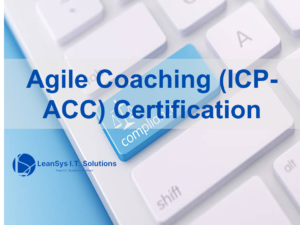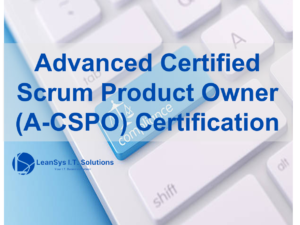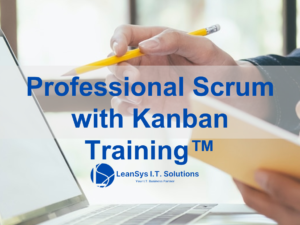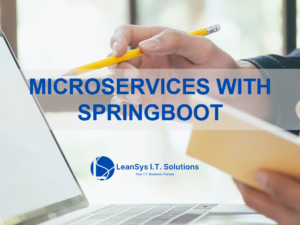ITIL Managing Professional Transition
- Description
- Reviews
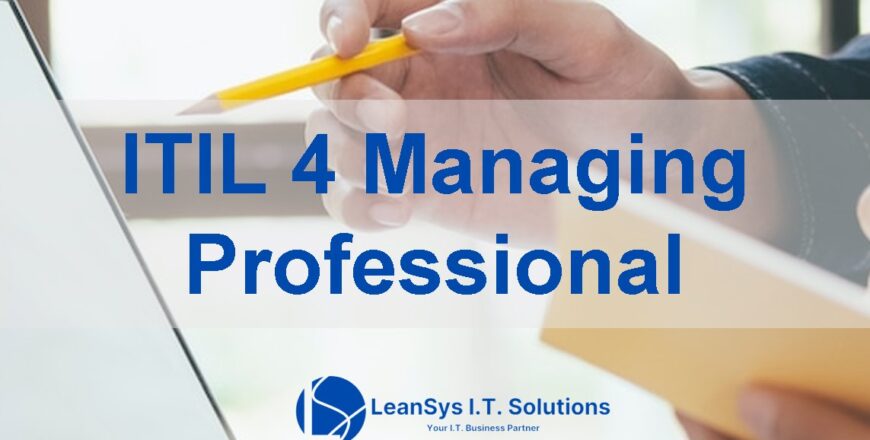
COURSE DESCRIPTION
This course provides those IT leaders, practitioners and support staff who already hold the ITIL v3 expert (or have 17 points under the ITIL v3 scheme) with a transition to the ITIL 4 Managing Professional designation. Students will get a deeper understanding of the key concepts of the service value system that enables successful management of modern IT-enabled services. It also prepares delegates for the ITIL 4 Managing Professional Transition examination which leads to the award of ITIL 4 Managing Professional status.
DURATION
5 Days
WHAT YOU’LL LEARN
-
Key IT service management concepts
-
Understand how the ITIL guiding principles can help an organization adopt and adapt service management
-
Understand the purpose and components of the ITIL service value system
-
Understand the activities of the service value chain, and how they interconnect
-
Understand how to plan and build a service value stream to create, deliver, and support services
-
Know how relevant ITIL practices contribute to the creation, delivery and support across the SVS and Value streams
-
Know how to create, deliver and support services
-
Understand concepts regarding the high-velocity nature of the digital enterprise, including the demand it places on IT
-
Understand the importance of the ITIL Guiding Principles and other fundamental concepts for delivering high velocity IT
-
Understand the digital product lifecycle in terms of value streams, goals and practices
-
Know how to drive customer value (the customer journey)
-
Know how to drive user value (the service user journey)
-
Understand the scope and activities relevant to Direct and plan
-
Understand the role of governance, risk and compliance and how to integrate the principles and methods into the service value system
-
Understand and know how to use the key principles and methods of Organizational Change Management to direction, planning and improvement
-
Preparation to sit the ITIL 4 Managing Professional Transition examination
PREREQUISITES
Candidates must be either hold the ITIL V3 Expert designation or have a minimum of 17 credits under the ITIL v3 scheme
WHO SHOULD ATTEND
IT leaders, ITIL practitioners and ITIL-expert support staff.
COURSE OUTLINE
Understand the key concepts of service management
-
Describe the key concepts of service relationships
-
Service offering
-
Service relationship management
-
Service provision
-
Service consumption
-
Understand how the ITIL guiding principles can help an organization adopt and adapt service management
-
Describe the nature, use and interaction of the guiding principles
-
Focus on value
-
Start where you are
-
Progress iteratively with feedback
-
Collaborate and promote visibility
-
Think and work holistically
-
Keep it simple and practical
-
Optimize and automate
-
Understand the purpose and components of the ITIL service value system
-
Understand the activities of the service value chain, and how they interconnect
-
Describe the purpose of each value chain activity:
-
Plan
-
Improve
-
Engage
-
Design & transition
-
Obtain/build
-
Deliver & support
-
-
Understand how to plan and build a service value stream to create, deliver, and support services
-
Understand the concepts and challenges relating to the following across the service value system:
-
Organisational structure
-
Integrated/collaborative teams
-
Team capabilities, roles, competencies
-
Team culture and differences
-
Working to a customer-orientated mindset
-
Employee satisfaction measurement
-
Understand planning and managing resources in the service value system:
-
Team collaboration and integration
-
Workforce planning
-
Results based measuring and reporting
-
-
Know how to design, develop and transition a value stream for new services
-
using the following ITIL practices:
-
Service design
-
Software development and Management
-
Deployment management
-
Release management
-
Service Validation and testing
-
Change Control
-
-
Know how to provide user support value stream using the following ITIL
-
practices:
-
Service desk
-
Incident management
-
Problem management
-
Knowledge management
-
Service level management
-
Monitoring and event management
-
-
Know how to create, deliver and support services
-
Understand the use and value of the following across the service value system:
-
Buy vs build considerations
-
Sourcing options
-
Service integration and management (SIAM)
-
-
Understand concepts regarding the high-velocity nature of the digital enterprise, including the demand it places on IT
-
Understand the following terms:
-
Digital organization
-
High velocity IT
-
Digital transformation
-
IT transformation
-
-
Understand when the transformation to high velocity IT is desirable and feasible.
-
Understand the five mid-level goals associated with digital products – to achieve:
-
Valuable ideas – strategically innovative and effective application of IT
-
Fast development – quick realization and delivery of IT services and IT-related products
-
Resilient operations – highly resilient IT services and IT-related products
-
Co-created value – effective interaction between service provider and consumer
-
Assured conformance – to governance, risk and compliance (GRC) requirements.
-
-
Understand how high velocity IT relates to:
-
The service value system
-
The ITIL service value chain
-
The four dimensions of service management
-
The digital product lifecycle
-
-
Understand the digital product lifecycle in terms of value streams, goals and practices
-
Understand which principles and concepts help understand the high velocity IT and know how to use them:
-
Organizational system
-
Systems thinking
-
Complexity thinking
-
Promise theory
-
-
Digital products
-
Design thinking
-
Service-dominant logic
-
Ethics
-
-
Work
-
Lean
-
Agile
-
DevOps
-
-
Know how to drive customer value (the customer journey)
-
Know how to foster customer relationships, by:
-
Providing informed feedback to assess and promote mutual understanding
-
Assessing mutual readiness and maturity
-
Know how to define requirements and service offerings, by:
-
Prioritising and authorising portfolio investments
-
Managing the full product/service lifecycle
-
Selling and procuring service offerings
-
Designing digital services experiences based on value driven, data driven and user centred service design
-
-
Know how to act together to ensure continual value co-creation (service consumption / provisioning), including:
-
Service interaction
-
‘Moments of truth’
-
Communities of practice
-
Encouraging and managing customer feedback
-
-
Know how to realise and validate service value, by:
-
Realising, tracking and monitoring service value outcome, risk, cost and resources
-
Reporting service outcome and performance
-
Validating service value
-
Establishing charging mechanisms
-
Evaluating the customer journey
-
Know how to drive user value (the service user journey)
-
-
Describe user relationship management by:
-
Promoting and marketing services
-
Relating with service users and fostering relationships
-
Using knowledge sharing to improve service user relations and performance
-
Profiling and proactive use of real-time end-user computing data
-
-
Know how to engage with service users by:
-
Developing engagement and delivery channels
-
Fostering service attitude, behaviour and culture (ABC)
-
Personalizing the user engagement experience
-
Providing proactive and outgoing support
-
-
Know how to co-create user service experiences by:
-
Interacting, co-creating value and realising outcome (Service usage / consumption)
-
Resolving service issues
-
Automatically fulfilling requests or resolving issues
-
Measuring and managing user experience
-
-
Know how to realise and validate user service value by:
-
Managing and measuring service usage, user experience, service outcome and performance
-
Evaluating the user journey and improving feedback loops
-
-
Understand the scope and activities relevant to Direct and plan
-
Identify the scope of control and within this:
-
Know how to cascade goals and requirements
-
Know how to define effective policies, controls and guidelines
-
Know how to place decision-making authority at the correct level
-
-
Understand the role of governance, risk and compliance and how to integrate the principles and methods into the service value system
-
Understand how governance impacts DPI
-
-
Know how to ensure that controls are sufficient, yet not excessive
-
Understand and know how to use the key principles and methods of
-
Organizational Change Management to direction, planning and improvement
-
Know how to use the key principles and methods of OCM:
-
Identify and manage different types of stakeholders
-
Effectively communicate with and influence others
-
Establish effective feedback channels
-

